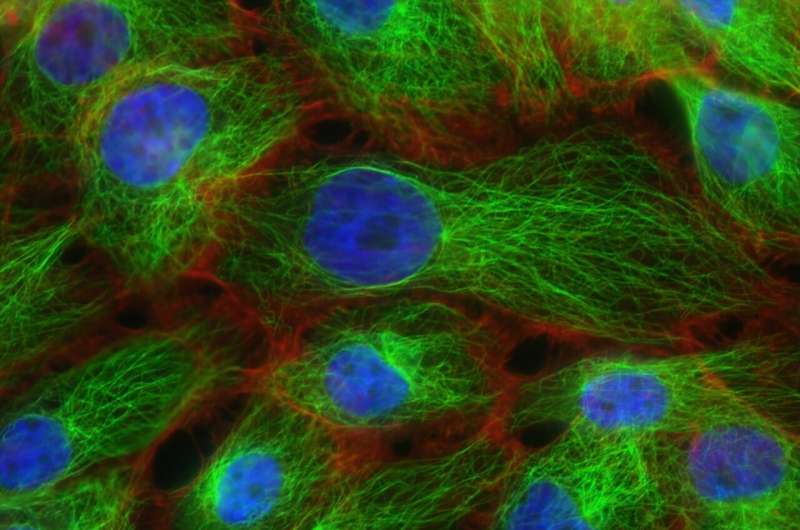
A study led by scientists at Sanford Burnham Prebys Medical Discovery Institute has identified a tumor marker that may be used to predict which breast cancer patients will experience resistance to endocrine therapy. The research offers a new approach to selecting patients for therapy that targets HER2, a protein that promotes the growth of cancer cells, to help avoid disease relapse or progression of endocrine-sensitive disease.
The study was published in the journal Nature Communications.
Nearly 80% of breast tumors are estrogen receptor (ER)-positive. For decades, these tumors have been treated with anti-estrogen (endocrine) therapies to lower estrogen levels and help slow the cancer’s growth. About 20% of breast cancers are also HER2-positive at diagnosis, and these tumors tend to be more aggressive and fast-growing, as HER2 is a receptor that when active, promotes the rapid growth of breast cancer cells.
“We know there is a subset of patients who are initially diagnosed with ER-positive, HER2-negative breast tumors, but their tumors convert to HER2-positive after they receive endocrine therapy,” says Svasti Haricharan, Ph.D., assistant professor in the Aging, Cancer and Immuno-oncology Program at Sanford Burnham Prebys and senior author of the study. “Unfortunately, this unleashes the detrimental effects of HER2, and patients become resistant to endocrine therapy—resulting in relapse, metastasis and death.”
With conventional endocrine therapy being unhelpful for these patients, Haricharan’s team examined how two genes, MLH1 and PMS2, affect HER2 activity. These genes are part of a biological system to “fix” DNA errors—but they also play a critical role in suppressing HER2. When these genes are turned off, HER2 becomes activated as soon as patients receive standard care endocrine therapy.
“Fortunately, there are tests for MLH1 and PMS2 activity that are now done routinely for colorectal and endometrial cancers,” says Nindo Punturi, a research assistant in the Haricharan lab and first author of the paper. “If we were to transition these tests to newly diagnosed cases of breast cancer, we could identify patients who may benefit from early HER2 targeted treatment—essentially shutting the door to HER2 activity before it gets started.”
The National Cancer Institute (NCI) estimates that 281,550 women in the U.S. will be diagnosed with breast cancer in 2021, and 43,600 women will eventually die from the disease. Some women whose MLH1 and PMS2 gene expression is low or absent may have an even greater risk of death.
Source: Read Full Article
